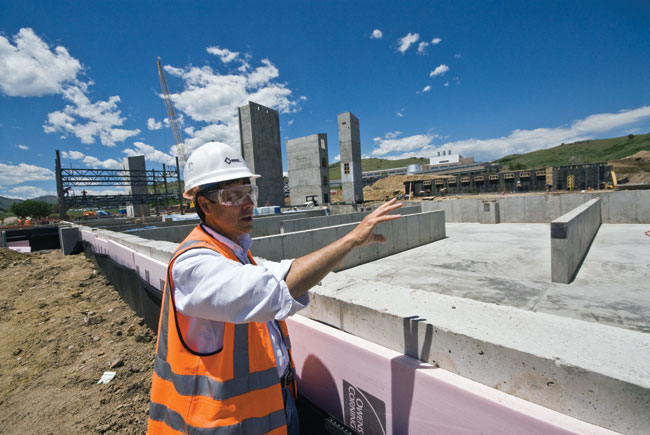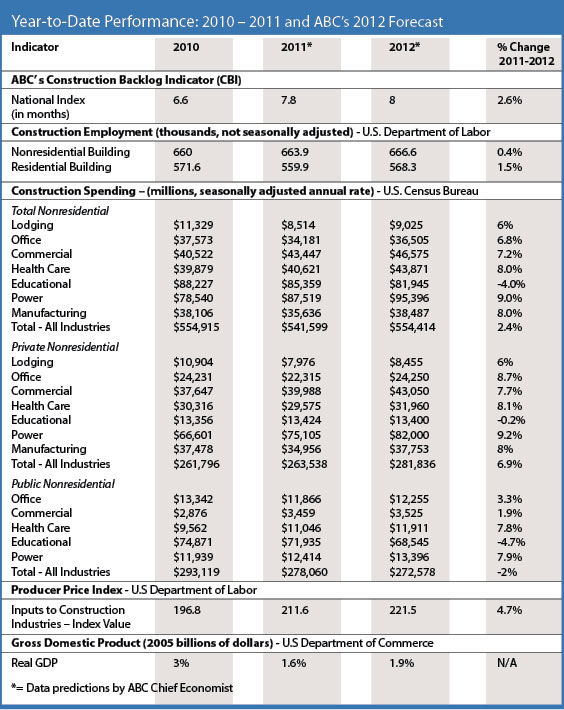2012 Will Be a Slow Year for Construction, Says the Associated Builders and Contractors
The construction industry is one of the most volatile sectors in the U.S. economy, and as such benefits greatly from economic expansions and suffers greatly in economic downturns. The most recent economic cycle has been particularly devastating for the construction industry. Since the end of 2008, construction spending in the United States has declined by more than a quarter, or by almost $300 billion, with the loss in this sector alone accounting for a 2 percent decline in the size of the U.S. economy. 2012 will see signs of improvement, but not a whole lot, according to the 2012 economic forecast for the U.S. commercial and industrial construction by the Associated Builders and Contractors (ABC).

“ABC’s analysis of construction trends indicates 2012 will be a year of gradual progress as advances in private construction are partially offset by ongoing declines in publicly financed construction,” said ABC chief economist Anirban Basu. “Nonresidential construction spending is expected to grow 2.4 percent in 2012 following a 2.4 percent decrease in 2011. The pace of recovery in the nation’s nonresidential construction industry remains soft and 2012 is positioned to be a year of slow gain. The first half of 2012 may be particularly challenging, a reflection of the soft patch in economic activity experienced during much of the first half of 2011.”
ABC’s national Construction Backlog Indicator, which stood at 8.1 months for both the second and third quarters of 2011, is not expected to advance substantially and likely will remain in the vicinity of 8 months of backlog for much of 2012. However, backlog is one month higher from the same time last year. A backlog of less than 8 months is associated with construction spending declines, while a backlog exceeding 8 months is statistically associated with future construction spending increases. Today’s level of backlog is consistent with flat construction spending.
“Nonresidential building construction employment is expected to increase 0.4 percent in 2012 following lackluster 0.6 percent growth in 2011,” Basu said. “Employers will continue to seek increased productivity among existing workers in order to boost weak industry margins. Also, in 2011, prices for construction inputs rose 7.5 percent. ABC expects 2012 materials prices will rise 4.7 percent.”

Much of the growth in recent years has emerged from publicly financed projects, explained the report, including projects related to the U.S. stimulus package passed in February 2009. With the impact of stimulus-funded projects steadily declining, the U.S. nonresidential construction sector will become increasingly dependent on privately financed projects for growth.
“However, certain segments are better poised for growth than others. Leading the way in recent months has been construction related to the nation’s power industry, which ABC projects to expand 11.4 percent during the course of 2011,” said Basu. “The driving force for the United States appears to be in energy, and the growth of this economic segment has been evident in a number of states, including Texas, Oklahoma, North Dakota and Pennsylvania. ABC expects power construction to continue to lead the way with a projected 9 percent increase in spending in 2012.”




